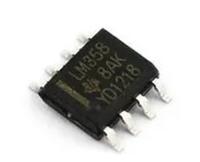2
I C RTC with Trickle Charger
2
STOP data transfer: A change in the data line’s
state from low to high, while the clock line is high,
defines a STOP condition.
I C Serial Data Bus
2
The DS1340 supports a bidirectional I C bus and data
transmission protocol. A device that sends data onto
the bus is defined as a transmitter and a device receiv-
ing data as a receiver. The device that controls the
message is called a master. The devices that are con-
trolled by the master are slaves. A master device that
generates the serial clock (SCL), controls the bus
access, and generates the START and STOP condi-
tions must control the bus. The DS1340 operates as a
Data valid: The data line’s state represents valid
data when, after a START condition, the data line is
stable for the duration of the high period of the
clock signal. The data on the line must be changed
during the low period of the clock signal. There is
one clock pulse per bit of data.
Each data transfer is initiated with a START condi-
tion and terminated with a STOP condition. The
number of data bytes transferred between the
START and STOP conditions is not limited, and is
determined by the master device. The information
is transferred byte-wise and each receiver
acknowledges with a ninth bit.
2
slave on the I C bus. Connections to the bus are made
through the open-drain I/O lines SDA and SCL. Within
the bus specifications a standard mode (100kHz max
clock rate) and a fast mode (400kHz max clock rate)
are defined. The DS1340 works in both modes.
The following bus protocol has been defined (Figure 7):
Acknowledge: Each receiving device, when
addressed, is obliged to generate an acknowl-
edge after the reception of each byte. The master
device must generate an extra clock pulse that is
associated with this acknowledge bit.
• Data transfer can be initiated only when the bus is
not busy.
• During data transfer, the data line must remain
stable whenever the clock line is high. Changes in
the data line while the clock line is high are inter-
preted as control signals.
A device that acknowledges must pull down the
SDA line during the acknowledge clock pulse in
such a way that the SDA line is stable low during
the high period of the acknowledge-related clock
pulse. Setup and hold times must be taken into
account. A master must signal an end of data to
the slave by not generating an acknowledge bit on
the last byte that has been clocked out of the
slave. In this case, the slave must leave the data
line high to enable the master to generate the
STOP condition.
Accordingly, the following bus conditions have been
defined:
Bus not busy: Both data and clock lines remain
high.
START data transfer: A change in the data line’s
state from high to low, while the clock line is high,
defines a START condition.
SDA
MSB
SLAVE ADDRESS
R/W
ACKNOWLEDGEMENT
SIGNAL FROM RECEIVER
DIRECTION
BIT
ACKNOWLEDGEMENT
SIGNAL FROM RECEIVER
SCL
1
2
6
7
8
9
1
2
3–7
8
9
ACK
ACK
START
CONDITION
STOP
CONDITION
OR REPEATED
START
REPEATED IF MORE BYTES
ARE TRANSFERED
CONDITION
2
Figure 7. I C Data Transfer Overview
____________________________________________________________________ 11










 LM317T数据手册解读:产品特性、应用、封装与引脚详解
LM317T数据手册解读:产品特性、应用、封装与引脚详解

 一文带你了解?DB3二极管好坏判断、参数信息、替代推荐
一文带你了解?DB3二极管好坏判断、参数信息、替代推荐

 LM358DR数据手册:引脚说明、电气参数及替换型号推荐
LM358DR数据手册:引脚说明、电气参数及替换型号推荐

 OP07CP数据手册解读:引脚信息、电子参数
OP07CP数据手册解读:引脚信息、电子参数
